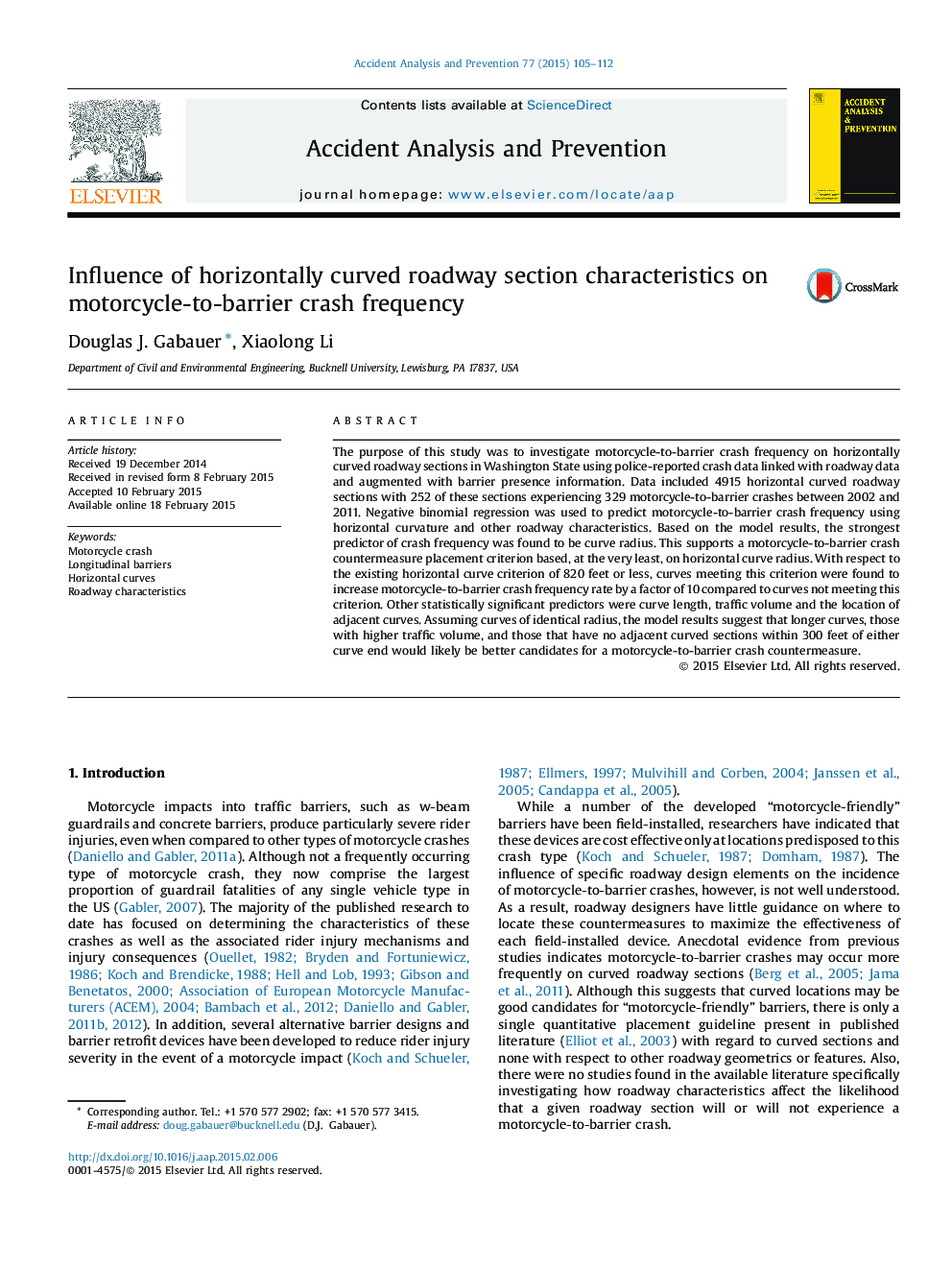| Article ID | Journal | Published Year | Pages | File Type |
|---|---|---|---|---|
| 572154 | Accident Analysis & Prevention | 2015 | 8 Pages |
•Motorcycle-barrier crash frequency on curves modeled using roadway characteristics.•Smaller radii, longer curves, higher traffic, isolated curves increase crash risk.•Results intended to help designers better locate motorcycle-friendly barriers.
The purpose of this study was to investigate motorcycle-to-barrier crash frequency on horizontally curved roadway sections in Washington State using police-reported crash data linked with roadway data and augmented with barrier presence information. Data included 4915 horizontal curved roadway sections with 252 of these sections experiencing 329 motorcycle-to-barrier crashes between 2002 and 2011. Negative binomial regression was used to predict motorcycle-to-barrier crash frequency using horizontal curvature and other roadway characteristics. Based on the model results, the strongest predictor of crash frequency was found to be curve radius. This supports a motorcycle-to-barrier crash countermeasure placement criterion based, at the very least, on horizontal curve radius. With respect to the existing horizontal curve criterion of 820 feet or less, curves meeting this criterion were found to increase motorcycle-to-barrier crash frequency rate by a factor of 10 compared to curves not meeting this criterion. Other statistically significant predictors were curve length, traffic volume and the location of adjacent curves. Assuming curves of identical radius, the model results suggest that longer curves, those with higher traffic volume, and those that have no adjacent curved sections within 300 feet of either curve end would likely be better candidates for a motorcycle-to-barrier crash countermeasure.
